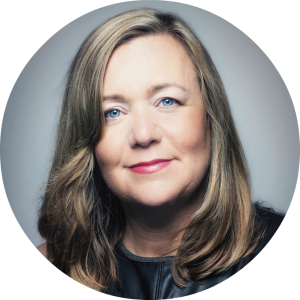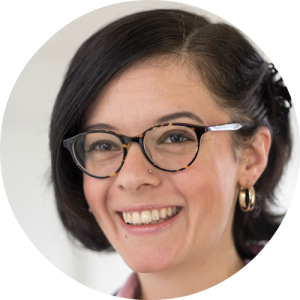In advance of Valentine’s Day, we asked Faculty of Arts scholars from Economics, Psychology, English and Philosophy to share their insights on how to think about love, what it means to say “I love you,” and the best way to improve one’s love life.


Dr. Marina Adshade is a lecturer in the Vancouver School of Economics. In 2008, she launched an undergraduate course titled Economics of Sex and Love which invites students to question sex and love through an economist’s lens.
Marina Adshade, Lecturer, Vancouver School of Economics
“The best starting place in the pursuit of love is to spend less time thinking about the fairly irrelevant qualities we believe we want in a partner (like how tall they should be, or their field of study) and more time thinking about what kind of partnership – or love – we really want.”
The concept of what it means to be in love has changed from one generation to the next, and varies from one society to another. That suggests love has the ability to evolve with changes to the economic system. For example, long gone are the days in which we idealized the romantic love shared between husbands and wives. This is because the purpose of love is no longer to bring together male breadwinners with female home makers. Over time we have all become more independent (women because of employment, and men because the market provides many goods and services previously supplied by women) and, as a result, there is far less consensus on what it means to be “in love”; today we have greater freedom to define what love is for ourselves, as individuals.
This creates new challenges within relationships since what one person might mean when they say “I love you” could mean something completely different (such as, “You are the most important person in my life right now”) than it does to the person who hears those words (who might hear, “I want to spend the rest of my life with you”). The key to relationship happiness is to have very clear conversations with the people you love, and who love you, as to what that exactly means to each of you individually.
Perhaps the best starting place in the pursuit of love is to spend less time thinking about the fairly irrelevant qualities we believe we want in a partner (like how tall they should be, or their field of study) and more time thinking about what kind of partnership – or love – we really want. That task is much more difficult, but given the importance placed on romantic love in our lives, it is surely worth the soul-searching.


Dr. Alec T. Beall is a postdoctoral researcher in the UBC Department of Psychology who studies romantic relationships and sexual attraction from an evolutionary theoretical perspective.
Alec T. Beall, Postdoctoral Research Fellow, Department of Psychology
“An overlooked feature relevant to first-impression sexual attraction might just be the emotion you display in your [online dating] profile photo.”
Since 2013, the percentage of 18- to 24-year-olds who participate in online dating (e.g., use dating apps) has roughly tripled; similar substantial increases in online dating use have been seen among other age groups as well. Given the ubiquity and increased reliance on online dating apps for relationship development in contemporary society, first-impression sexual attraction is now—perhaps more than ever—of paramount importance. Indeed, for better or worse, enhancing the sexiness of your online profile picture might be one of the most impactful ways to improve your love life in the “swipe-right generation.”
Now, in an ideal world, we would prefer potential romantic partners to peer beyond the superficial and be attracted to our personalities—but whatever; when in Rome, try to match with the Romans, I guess. What’ll get those Romans swiping right? Well, according to a study Dr. Jessica Tracy and I ran in 2011, an overlooked feature relevant to first-impression sexual attraction might just be the emotion you display in your profile photo.
To see whether the sexual attractiveness of men and women varied depending on which emotion they expressed in a photograph we conducted four empirical investigations. We had 1,041 people rate the attractiveness of over 480 targets in either a happy, shameful, proud, or neutral pose and found that emotion expression did indeed have a direct impact on sexual attractiveness. We found happiness was consistently rated as the most attractive emotion for women to express and that female pride was the least attractive. Pride was consistently rated as the most attractive emotion for men to express with shame close behind; perhaps the most surprising finding from this work was that happiness was consistently rated as the least attractive male emotion to express. Happy swiping! (Unless you’re a guy).


Mandy Len Catron teaches English and Creative Writing at UBC. She is the founder of The Love Story Project, a blog about love stories, and has delivered two TED talks about love.
Mandy Len Catron, Lecturer, Department of English
“One way to get better at love is to start challenging these ideas [common tropes in love stories] —Are they realistic? Do they align with your values and experiences? What’s at stake when we accept the idea that love requires us to be miserable?”
One of the big ideas that I see in so much of the contemporary scholarly research on love is that we have more control over our experiences of love than we might think. I write about love stories—what our stories suggest about how love should work and how they shape our experiences of love. One thing I’ve noticed is that stories in popular culture—from music videos to Shakespeare—tend to offer a fairly narrow script for love’s role in our lives. I think we’d all have more satisfying experiences of love if we could widen that script.
In my writing and in the classroom, I try pay attention to common tropes in popular love stories, things like: Love requires suffering; True love crosses social and economic barriers; Monogamy is essential to happiness; Marrying for love is morally correct and marrying for status is morally corrupt. These ideas are so ubiquitous that we don’t always notice how our narratives reinforce them. One way to get better at love is to start challenging these ideas—Are they realistic? Do they align with your values and experiences? What’s at stake when we accept the idea that love requires us to be miserable?
I try to encourage my students to consume better love stories—stories that present us with more scripts for the ways love can work in our lives. Because I’m an English teacher, I’ll recommend a few books I’ve enjoyed lately, but there are great non-normative love stories to be found in TV shows, movies, music. You just have to make a habit of seeking them out.
You can start here: Blue is the Warmest Colour by Julie Maroh, Fates and Furies by Lauren Groff, A Home at the End of the World by Michael Cunningham, Just Kids by Patti Smith.


Dr. Carrie Jenkins is a Canada Research Chair in Philosophy at UBC and the Principal Investigator on the SSHRC funded project The Metaphysics of Love.
Carrie Jenkins, Professor, Department of Philosophy
“I am working to understand love’s socially constructed (and socially policed) nature right alongside an understanding of love’s biological reality and evolutionary history. Despite the costs of doing this kind of work, I believe in its long-term philosophical value and short-term political urgency.”
One of the most important things I’ve learned during my research on love is that if you draw conclusions that challenge social norms, you face multiple forms of pushback. I’ve come to understand this as part of the process by which romantic love (as a social construct) is policed. Pushback isn’t always as obvious as simple name-calling; sometime it masquerades as concern for your well-being, and in other cases is only evident when you notice the application of a double standard.
For example, I’ve noticed that when I talk about polyamorous relationships I am sometimes expected to list off various hardships that stereotypically accompany non-monogamy, such as jealousy. If I don’t conform to that expectation, I’m regarded as having presented polyamory (as a whole) as “utopian.” But monogamous people aren’t accused of presenting monogamy (as a whole) as “utopian” when they discuss their monogamous relationships without listing off various stereotypical potential problems with monogamy. This double standard is, then, a way of policing of positive depictions of non-normative love: depictions of such love are not allowed to be positive, they must include an explanation of why such love is wrong, dangerous, damaging etc. as otherwise they are a threat to the established status quo.
More generally, expecting one person to speak for, or accurately represent, an entire group, is symptomatic of “othering” behaviour (for example, when a woman performs poorly on a math test and this is taken as evidence concerning the capabilities of her entire gender, when a man’s poor performance would not be so regarded). It’s the same phenomenon that’s in play when people reason that polyamory is “unstable” because they “know someone who tried it” and it “didn’t work.” In my new book, What Love Is And What It Could Be (Basic Books, 2017) I am working to understand love’s socially constructed (and socially policed) nature right alongside an understanding of love’s biological reality and evolutionary history. Despite the costs of doing this kind of work, I believe in its long-term philosophical value and short-term political urgency.
Related:
- The Love Market: Q&A with Marina Adshade, UBC News, Feb 11, 2014
- The Laws of Attraction: Q&A with Alec Beall. UBC News, Feb 12, 2016
- Mandy Len Catron, To Fall in Love with Anyone, Do This. New York Times, Jan 9, 2015
- Untangling the mysteries of love: Q&A with Carrie Jenkins, UBC News, Jan 25, 2017


